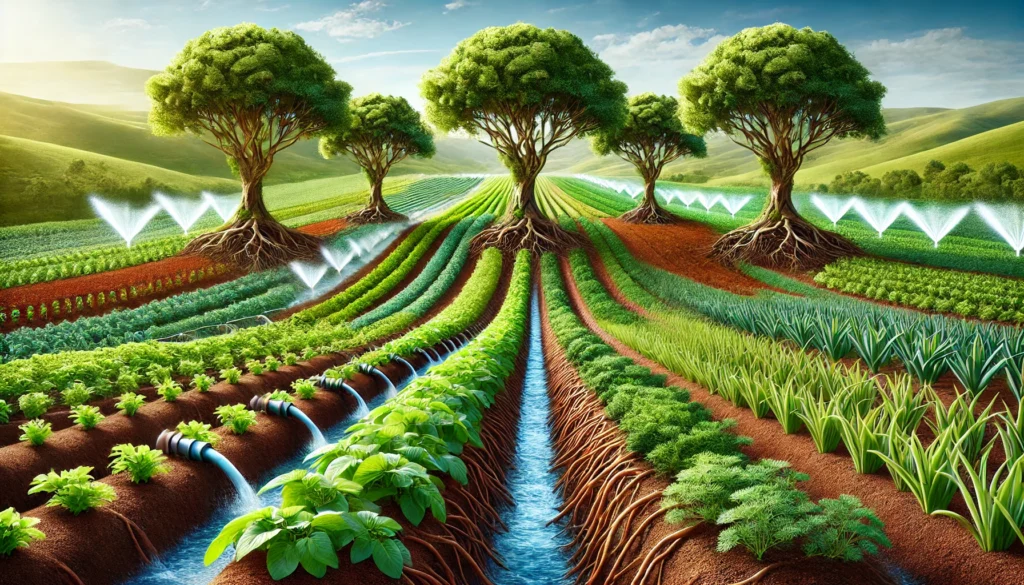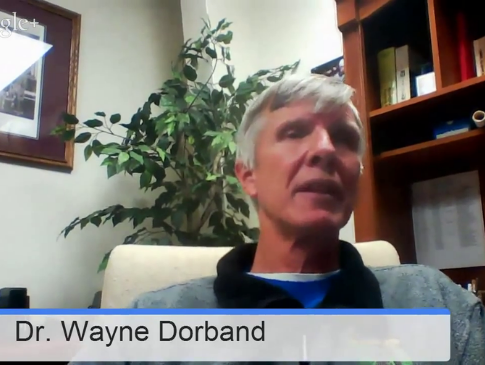Water scarcity is one of today’s most pressing challenges, and regenerative agriculture is proving to be an essential part of the solution. When we think about water conservation, it’s natural to picture shorter showers or using low-flow faucets. But did you know that the way we grow food can also play a significant role in managing and conserving water?
Regenerative agriculture is all about working with nature rather than against it. By improving soil health, increasing biodiversity, and fostering resilient ecosystems, regenerative practices help retain water, reduce runoff, and promote sustainable water use. Here’s how regenerative agriculture is making a difference in water conservation and management.
1. Healthy Soils: The Key to Water Retention in Regenerative Agriculture
Restoring soil health is central to regenerative agriculture, and it’s key to water conservation. Imagine healthy soil as a sponge that can absorb and hold water when it rains. This happens because healthy soil is full of organic matter, which improves water infiltration and retention. Techniques like composting, planting cover crops, and practicing no-till farming all improve soil structure and increase organic content, making soil able to retain water longer. When soil holds moisture for extended periods, it also prevents runoff, reducing soil erosion and keeping nutrients in the ground rather than washing away.
2. Cover Crops: Protecting Moisture and Reducing Evaporation
Using cover crops is a powerful way to support water conservation in agriculture. Cover crops are grown between main crop cycles to keep soil covered throughout the year. This practice retains soil moisture and reduces evaporation, even during hot months. With cover crops, farmers can prevent soil compaction, allowing rainwater to seep deeper and be stored for future plant use. This means that regenerative farms using cover crops often need less irrigation, saving valuable water resources and supporting long-term water management.
Moreover, regenerative agriculture encourages the planting of perennial systems, such as agroforestry. In these systems, trees and deep-rooted plants stabilize the soil, reduce runoff, and promote groundwater recharge. Roots from perennial plants form channels that allow water to percolate deep into the earth, recharging aquifers and providing a steady water supply. The shade created by trees cools the soil, further reducing evaporation rates.
3. Efficient Irrigation Techniques for Regenerative Agriculture
Regenerative farms often require less irrigation due to their emphasis on soil health and plant diversity. Techniques like keyline design – a method of land contouring – help guide rainwater into the soil, reducing the need for artificial irrigation. This not only conserves water but also lowers the energy used to pump and transport water over large distances. Efficient irrigation is a crucial component of regenerative agriculture’s contribution to water management.

4. Regenerative Agriculture means Cleaner Water, Less Pollution
Conventional agriculture often relies on synthetic pesticides and fertilizers, which can contaminate local water sources. However, regenerative farms prioritize natural fertilizers and integrated pest management, protecting both soil and water quality. This reduces the risk of water pollution, resulting in cleaner water flowing downstream, which benefits wildlife and lowers the cost of treating water for human consumption.
By focusing on regenerative agriculture, we’re investing in a future where agriculture doesn’t have to compromise water resources. As we strive for sustainability, regenerative agriculture and water conservation go hand in hand, providing an impactful solution to water scarcity challenges.
Want to learn more about how regenerative agriculture is revolutionizing sustainability? Check out EAT Community’s resources on regenerative practices to see how these methods contribute to a more resilient planet.
Take Action Today
Whether you’re a farmer or a concerned citizen, consider how regenerative practices could play a role in your own community. Together, we can work towards a world where water conservation and regenerative agriculture support a healthier, more sustainable future.

About the Author: Dr. Wayne Dorband
Dr. Wayne Dorband is a visionary leader in the fields of sustainability, ecolonomics, and regenerative land development. With decades of experience as an environmental scientist, educator, and entrepreneur, Dr. Dorband has dedicated his career to merging ecological responsibility with economic viability.



